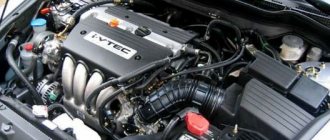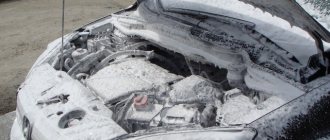Is it possible to wash a car after painting and how long should it not be done? — Automaster
31.05.2019
CONTENT:
Car care after painting
Almost all motorists are wondering how they can keep the appearance of their car in good condition for a long time after painting it. Here are some tips on these issues.
With proper car care, the shine, strength and good appearance of the paint are preserved for a long time.
Proper care means timely washing of the car, and periodic treatment of painted external surfaces with special pastes and polishing water with additional sanding of areas of paint defects.
Features of washing after painting a car
Before you start washing, you need to tightly raise the door windows, close the hood, all doors, the trunk lid and the air intake hatch so that water does not get inside the body. It is also necessary to ensure that water does not get on the electrical equipment under the hood because it can get not only from the top but also from the bottom from the bottom.
The car should be washed immediately after the trip, before the adhering dirt has dried. But if this is not possible, then the dried dirt should be washed off carefully, first soaking it with a weak stream of water. And rubbing or scraping dirt leads to damage to the paint, the appearance of small scratches, scaling and cracks, which significantly worsen the appearance of the car.
After painting, washing the car should be done in the shade or indoors, because water drying in the sun leaves stains. A painted car should not be exposed to air at temperatures below 0°C wet or washed at such temperatures. This may cause the paint to crack.
To wash a car, it is better to use a hose through which a weak stream of cold or slightly warm water is supplied. This will preserve the integrity of the paint for a long time, unlike washing under high pressure when hard dust and dirt scratch the paint and hot water quickly destroys the paint.
After you have washed off the dirt and dust, a layer of silt remains on the painted surface, which dries and leaves gray stains. It can be removed using a soft hair brush, chamois leather or sponge, continuously and generously watering.
If you want to preserve the appearance of your car for a long time, then do not dry wash even the dust and do not try to wash the car with kerosene, soda, mineral oils and gasoline after painting. Except for those cases when the body is contaminated with mineral oil or tar, then it must be cleaned with a soft flannel slightly moistened with gasoline, and then wiped dry. If you cannot wash the car with a hose, then dirt and dust should be washed off with a generous sprinkling of water from a bucket or garden watering can.
How to sand the paintwork after painting?
Sanding after painting a car
After painting the car, you need to sand and polish the paintwork to eliminate various minor defects that appear on the surface of the varnish. They need to be done 3-4 weeks after painting. To eliminate small debris, shagreen, dust particles, dips and shrinkage in repair areas that form after the varnish has completely cured.
- It can be divided into three stages:
- Grinding
- Abrasive polishing (polishing using abrasive pastes)
- Protective polishing (polishing using pastes for protection and shine)
Sanding: Can be “wet” or “dry”. Wet is produced by using water in the grinding process. For this, special water-resistant sandpaper is used. With an abrasive grain size initially no less than 2000, and then increasingly finer grains are used (2500-4000).
When sanding by hand, you can use a variety of soles and graters on which the sandpaper is fixed. When dry sanding, it is better to use an orbital sander. In this case, grinding wheels with abrasiveness from 1000 to 2000 are used.
The most effective place to use this machine is on large and flat surfaces. This procedure is carried out until visible defects are eliminated. In this case, these two methods are combined with each other.
On the corners of body parts, you need to use manual sanding, since there is a high probability that the varnish will be rubbed down to the pigment or primer.
Polishing a car after painting the body
Polishing a car after painting
After polishing the car, to maintain the shine and good appearance after painting the car for a long time, you need to polish the car body.
Polishing a car body is designed to give the car an excellent appearance, eliminate microcracks, scratches, remove the smallest unevenness in the coating and protect the coating from external factors.
Since the smallest paint defects, invisible to the naked eye, allow aggressive liquids to penetrate under the coating and cause corrosion, polishing also protects the body from these processes. Polishing stages:
- partial removal of the coating, in which fine abrasive sandpaper is used;
- restorative polishing using abrasive paste;
- protective polishing after painting the car with a non-abrasive paste to give a special shine.
Types of polishes
- If the paint on the body is not badly damaged, then it is enough to use a polish without abrasive particles to restore it, but before that you need to treat it with a polish with a high content of abrasive elements.
- If there are a large number of microcracks on the body, it is better to use color-enriching polishes. Which cannot replace paint and eliminate scratches to metal, and they do not form a protective coating on the body, so they should be used in combination with protective types of polishes.
Classification of polishes by consistency:
- paste polishes. They are used for horizontal and vertical surfaces due to their thick consistency. At the same time, they give the coating a significant depth of color;
- Liquid polishes are safer to use because they do not cause increased wear of the coating even with prolonged use. But they are limited in scope and are used only on horizontal surfaces;
- Although aerosol polishes are convenient to use, due to the fact that a significant part of the can is occupied by solvent and propellant, the amount of polish itself in it is not very large.
Depending on the depth of damage to the body coating after painting a car, polishing is divided into restorative and protective.
Car polishes
Restorative polishing can be used to remove shallow scratches, the depth of which does not exceed the depth of the paintwork before the primer; tearing out abrasions and oxidized layers, which manifest themselves as clouding of the paintwork, in the form of spots or stripes.
The process of applying restorative polishing consists of mechanically removing a surface layer with abrasive pastes about 5 microns thick. Whereas the thickness of the paint coating is about 100-150 microns, therefore about 10-20 polishings can be carried out on one painting without compromising its integrity.
Protective polishing is designed to protect the paintwork after painting a car from negative environmental influences. It uses non-abrasive polishes based on wax or synthetic materials. Depending on the bases on which polishes are made, they are divided into wax, silicone and polymer.
Wax and silicone protective polishes are easy to apply, but also easy to wash off after two or three visits to the sink. And they will need to be reapplied. Polymer polishes are more durable; they are applied once every 6 months, have good protective properties, but at the same time they are more expensive and their application is more labor-intensive.
What not to do while washing
In order not to spoil the fresh paint layer when washing a car, you should consider what you absolutely should not do: – Under no circumstances should you wash your car immediately after a trip on a hot sunny day! The car must first cool naturally, otherwise the painted layer may become cloudy. – Do not wash your car in the sun, but only in the shade, as drops of water drying in the sun will cause the paint to fade unevenly. – You can’t wash your car in the wind. Specks of dust and debris brought by the wind and remaining on the surface of the body will become an abrasive, and this is a threat of scratches. In windy weather, a washed car will dry faster and white spots may appear on the surface from the shampoo used. They will have to be scrubbed thoroughly, and this does not help preserve the varnish layer. – Don’t even think about using a high-pressure apparatus to wash your car! Everything is done entirely by hand. How to wash a car We have already figured out how many days after painting you can finally wash your car - after 14. Now you need to figure out how to carry out this procedure so as not to harm your four-wheeled friend. At the same time, gentle washing should be done not only the first time after painting, but also 2-3 subsequent times. The ideal weather for washing is cloudy and cool. For washing, use a soft sponge and a light stream of water. Wet dirt can be removed with a soft cloth. If the dirt has already dried, first soak it well with water and then remove it.
Important! Never use a brush or rag to scrape off the dirt, otherwise you will need repainting very soon!
You should start washing your car from the roof. First, wet it with a gentle stream of water from a hose. If there is no running water, then use a garden watering can. After wetting the surface, dilute the shampoo in a partial bucket of water. Soak a sponge in this solution and wash (you can use a spray bottle if desired). Don't forget to wet the sponge in water as often as possible! After this, rinse off the detergent with a gentle stream of water from a hose fitted with a nozzle. At the very end, you should dry the body by walking over it with a soft cloth.
Please note that you should never wash your car with hard water, as it will leave white stains.
To avoid the solution of water and shampoo from drying out on the surface of the body and the appearance of white spots or streaks (they will have to be removed by rubbing these places with a damp cloth, which in our case is undesirable), you can not wet the entire car at once, but half at a time. After rinsing one part, apply shampoo to the second, and then rinse.
Please note: Painting the steering wheel
Clean it - and for less!
What household products can be used when washing a car instead of specialized auto chemicals?
We have noted more than once that many chemicals with completely different purposes have very similar chemical formulas. And my favorite example on this topic is a plumbing cleaner that was perfect for removing dandruff! I don’t know who checked this and why, but the head of a respected research institute told me about it at one time.
Cleaning machine parts
To clean components, car thresholds, closed body cavities, as well as its underbody, special products are used: powders and liquid compositions. They are applied before anti-corrosion body treatment.
To remove bitumen, oil or grease stains, you must use the “Auto Cleaner for Bitumen Stains”. It will carefully clean the surface of the body and other elements of the car without causing harm to the paintwork.
Car cleaner should be applied with a soft cloth. Next, you need to wait a few minutes so that the dirt has time to soften. Afterwards, wipe the surface to be treated dry with a clean soft cloth.
Previous Useful tipsCalculation of the approximate cost of painting a car Next
Useful tips How to register for a car color change in the traffic police after repainting the vehicle
Do-it-yourself car care after painting - polishing, sanding
CONTENT:
Car care after painting
Almost all motorists are wondering how they can keep the appearance of their car in good condition for a long time after painting it. Here are some tips on these issues. With proper car care, the shine, strength and good appearance of the paint are preserved for a long time. Proper care means timely washing of the car, and periodic treatment of painted external surfaces with special pastes and polishing water with additional sanding of areas of paint defects.
How long before you can wash your car?
Washing a freshly painted car is strictly prohibited! However, when the car body becomes dirty, particles of dirt, dust, oils, and chemicals react with the paint, which has not yet gone through the stage of complete polymerization. Dirt seems to eat into the coating, scratch and spoil it, so a dirty car still needs washing.
Experts advise not to wash your car for a month after painting, if possible. Do not use high-pressure washing during this period, otherwise the coating may be damaged.
The minimum period of time during which washing is prohibited is 15 days, and even after this period, you should contact specialists for a delicate wash and do not scrub the body yourself. If the painting was done in winter, which does not happen often, you should not wash the body for as long as possible. It is better to find out about the exact period after which you can start washing from a car painter or read the instructions for the paint.
Selecting a detergent
If in the first weeks after painting there is a need to clean the surface of the body, it is carried out without the use of detergents. For severe stains that cannot be removed with water and a sponge, you need to choose the right detergents for cars.
Gentle car wash products contain silicone or wax. These substances form a thin film on the surface of the body that protects the car from moisture, sun, mechanical damage and other negative factors. Dirt sticks less to a car treated with these compounds, so the washing procedure can be carried out less frequently. Another advantage of products containing wax or silicone is the shine of the body after their use.










